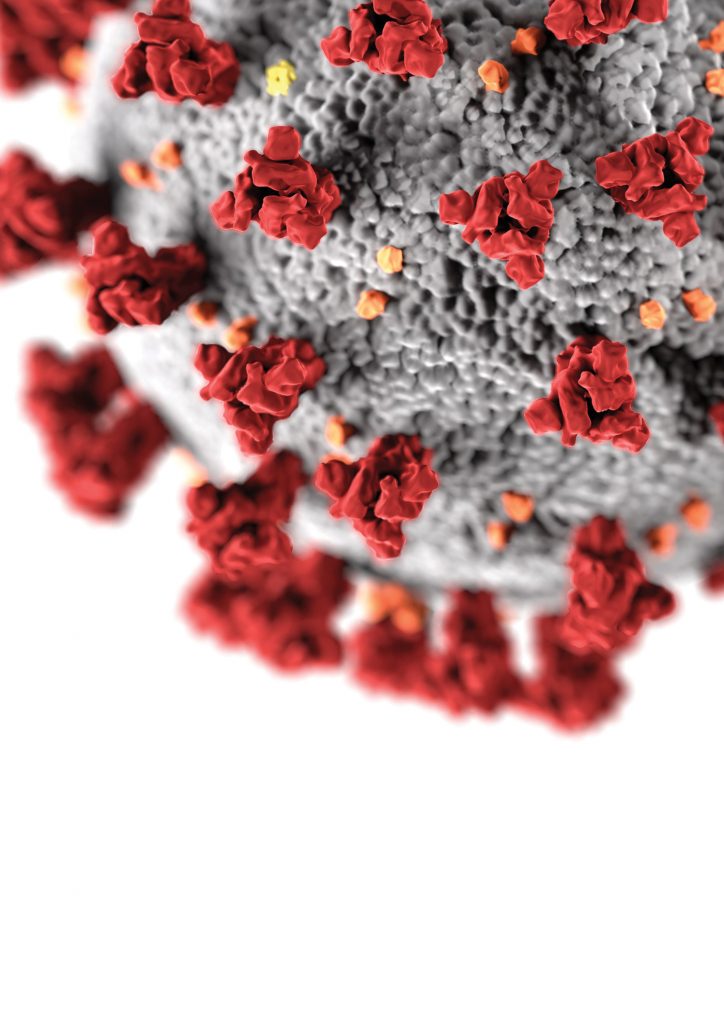Outcomes of COVID-19 analysed

Cheryl Guttman Krader
Published: Sunday, May 10, 2020
 A paper published online in JAMA on April 22 reports the characteristics for 5700 consecutive COVID-19 patients hospitalised in the New York City area along with outcomes data for approximately one-half of the cohort.
https://jamanetwork.com/journals/jama/fullarticle/2765184
The series is thought to represent the largest COVID-19 case series presented to date, and in the words of the authors of an accompanying comment, “the findings are sobering”.
All patients in the series had a laboratory-confirmed diagnosis of COVID-19. They were cared for between March 1 and April 4, 2020 at 1 of 12 hospitals that are part of a large academic health system.
The patients ranged in age 0 to 107 years (median 63) and included 60% males, 40% whites, and 23% African Americans. While 84% had never smoked, 57% had hypertension, 34% had diabetes, and 42% were obese. Nearly all patients (88%) had more than one comorbidity.
The outcomes analyses considered the 2634 patients who had a definite outcome at the analysis cutoff date, defined by either being discharged (n=2081, 79%) or having died (n=21%, 553). Among these 2634 patients, 14.2% had been admitted to intensive care, 12.2% received mechanical ventilation, and 3.2% needed kidney replacement therapy. Among patients on mechanical ventilation, the mortality rate was 76% for those aged 18 to 65 years and 92% for those older than 65 years.
Within the subgroup of patients who died, those who had diabetes were more likely than those without diabetes to have received mechanical ventilation or care in the ICU; receipt of mechanical ventilation or ICU care were less likely among patients with hypertension compared to those without hypertension considering the patients who died
The discharged subgroup had a median follow-up of 4.4 days postdischarge, and 2.2% of those patients were readmitted to the hospital at a median of 3 days.
Approximately 8% of the patients with a definite outcome had been on an angiotensin-converting enzyme inhibitor (ACEi) or an angiotensin II receptor blocker (ARB) prior to hospital admission. In the hospital, approximately one-half of those patients remained on their respective medication, 49 patients were started an ACEi, and 58 started an ARB. Among patients with hypertension, the mortality rate was 26.7% for patients who were not taking an ACEi or ARB, 32.7% for those on an ACEi, and 30.6% for the ARB subgroup. The authors noted these findings are not adjusted for potential confounders, and their study is not designed to address the potential for these antihypertensive medications to affect patient outcomes.
They also underscored that the outcomes analyses do not include the patients who remained hospitalised. Therefore, the mortality rate may change with longer follow-up.
A paper published online in JAMA on April 22 reports the characteristics for 5700 consecutive COVID-19 patients hospitalised in the New York City area along with outcomes data for approximately one-half of the cohort.
https://jamanetwork.com/journals/jama/fullarticle/2765184
The series is thought to represent the largest COVID-19 case series presented to date, and in the words of the authors of an accompanying comment, “the findings are sobering”.
All patients in the series had a laboratory-confirmed diagnosis of COVID-19. They were cared for between March 1 and April 4, 2020 at 1 of 12 hospitals that are part of a large academic health system.
The patients ranged in age 0 to 107 years (median 63) and included 60% males, 40% whites, and 23% African Americans. While 84% had never smoked, 57% had hypertension, 34% had diabetes, and 42% were obese. Nearly all patients (88%) had more than one comorbidity.
The outcomes analyses considered the 2634 patients who had a definite outcome at the analysis cutoff date, defined by either being discharged (n=2081, 79%) or having died (n=21%, 553). Among these 2634 patients, 14.2% had been admitted to intensive care, 12.2% received mechanical ventilation, and 3.2% needed kidney replacement therapy. Among patients on mechanical ventilation, the mortality rate was 76% for those aged 18 to 65 years and 92% for those older than 65 years.
Within the subgroup of patients who died, those who had diabetes were more likely than those without diabetes to have received mechanical ventilation or care in the ICU; receipt of mechanical ventilation or ICU care were less likely among patients with hypertension compared to those without hypertension considering the patients who died
The discharged subgroup had a median follow-up of 4.4 days postdischarge, and 2.2% of those patients were readmitted to the hospital at a median of 3 days.
Approximately 8% of the patients with a definite outcome had been on an angiotensin-converting enzyme inhibitor (ACEi) or an angiotensin II receptor blocker (ARB) prior to hospital admission. In the hospital, approximately one-half of those patients remained on their respective medication, 49 patients were started an ACEi, and 58 started an ARB. Among patients with hypertension, the mortality rate was 26.7% for patients who were not taking an ACEi or ARB, 32.7% for those on an ACEi, and 30.6% for the ARB subgroup. The authors noted these findings are not adjusted for potential confounders, and their study is not designed to address the potential for these antihypertensive medications to affect patient outcomes.
They also underscored that the outcomes analyses do not include the patients who remained hospitalised. Therefore, the mortality rate may change with longer follow-up.